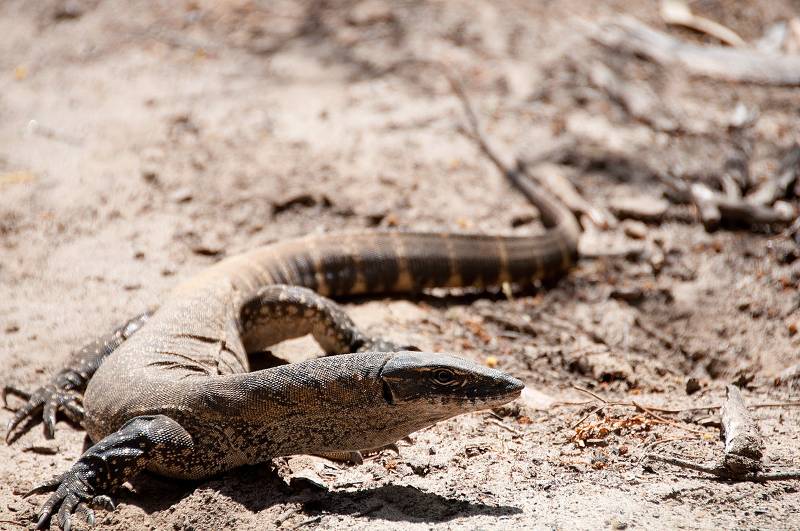Heath goannas, Australia’s giant scavenging lizards, might be the unlikely heroes sheep farmers have been waiting for. A new study led by the University of Cambridge shows these impressive reptiles could save the Australian sheep farming industry millions of dollars annually by naturally controlling blowfly populations.
The research, published in Ecology and Evolution, highlights the crucial role these native lizards play in cleaning up animal carcasses across the landscape. By doing so, they significantly reduce the number of blowflies, which are responsible for a devastating sheep disease known as ‘fly strike’.
Nature’s Clean-Up Crew: Heath Goannas vs. Blowflies
The study, conducted across 18 sites in the Marna Banggara Rewilding Project area on Australia’s southern Yorke Peninsula, compared the scavenging activity of different animals. Researchers left dead rats at feeding stations with camera traps and returned after five days to assess the results.
Tom Jameson, a PhD researcher at Cambridge’s Department of Zoology and the study’s lead author, explained the process: “It was disgusting – we were counting maggots. After five days we’d find over 1000 maggots in one rat if a scavenger hadn’t found it. Those maggots produce blowflies that can spread up to 20 kilometres in a week, putting local sheep flocks at risk of fly strike.”
The findings were clear: native Australian scavengers, particularly heath goannas, were far more effective at removing carcasses and their maggots than introduced European mammals like foxes and cats.
Economic Impact and Conservation Implications
Fly strike is a severe problem for Australian sheep farmers, costing the industry an estimated $280 million annually. The disease occurs when blowflies lay eggs on sheep’s backsides, which hatch into flesh-eating maggots, causing painful wounds, reduced breeding success, and often death.
“Blowflies are a massive problem for the Australian sheep farming industry. They cause a horrible disease that is expensive for farmers to manage and a real animal welfare problem for sheep,” Jameson noted.
The study’s results suggest that conservation efforts in southern Australia should focus on boosting heath goanna populations and other native species. This approach could benefit not only native wildlife but also local agriculture and wildlife tourism.
Heath goannas, endangered lizards that can grow up to a meter and a half in length, are now the largest remaining native land scavengers in much of Australia. Their role in the ecosystem has become even more crucial since the introduction of European foxes and cats in the 18th century, which decimated many native scavenger species.
As the Marna Banggara rewilding project, supported by Narungga traditional owners, aims to restore ecosystem health by reintroducing missing native species, this study underscores the importance of including large reptiles like heath goannas in conservation plans.
By highlighting the unexpected connection between these ancient lizards and modern agriculture, this research opens new avenues for ecological restoration that could benefit both wildlife and farmers. As Australia continues to grapple with the impacts of introduced species, the humble heath goanna might just prove to be a key ally in maintaining ecological balance and supporting sustainable agriculture.


